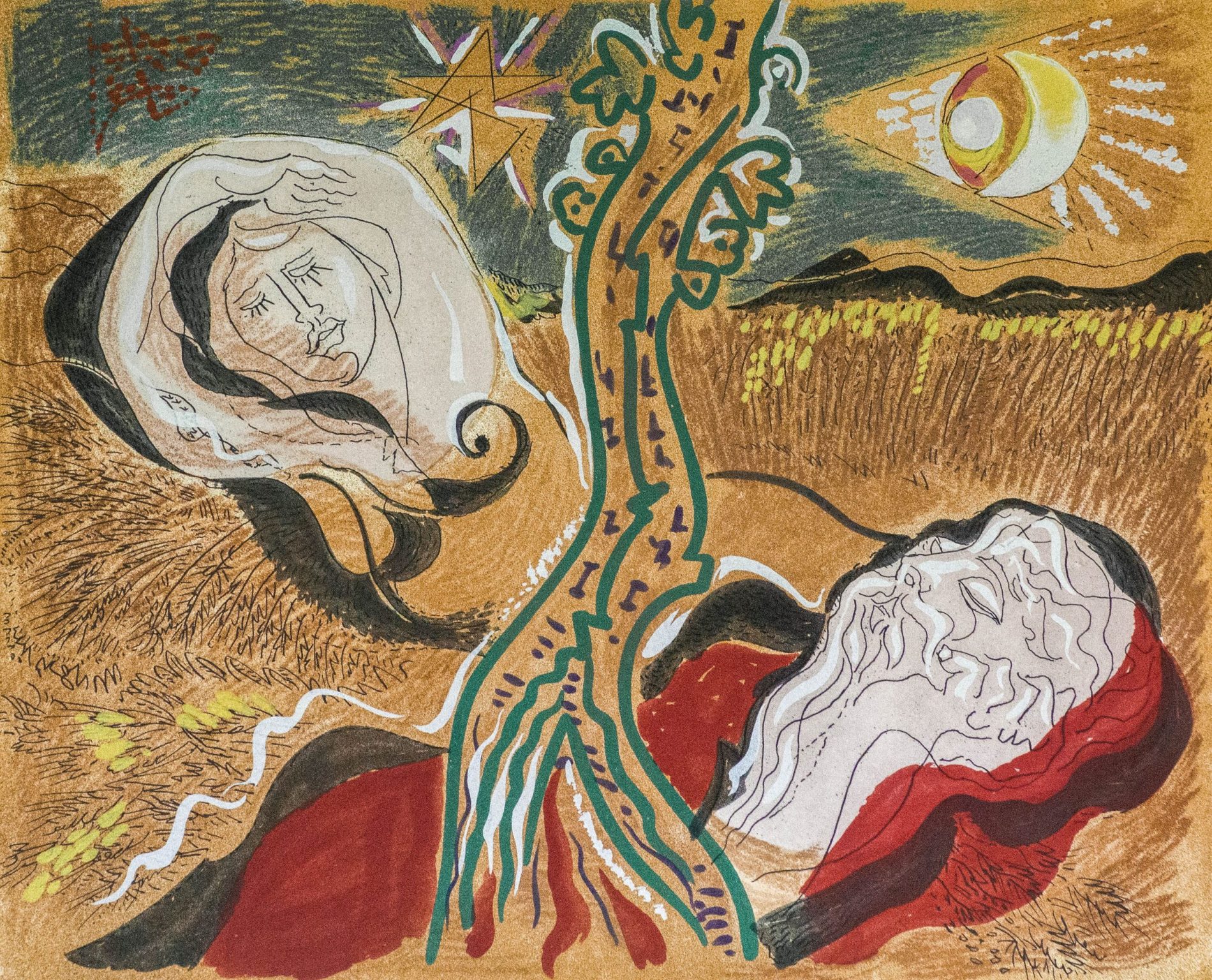An artist marked by war and surrealism
André Masson was born in 1896 in Balagny-sur-Thérain, France. In his youth, he moved to Brussels with his family between 1903 and 1911, where he studied at the Royal Academy of Fine Arts. Years later, he enrolled at the School of Fine Arts, where he specialized in fresco painting. His initial training in classical art would contrast deeply with the innovative directions he would later take.
In 1915, Masson enlisted in the French infantry to participate in World War I. He was severely wounded, which led to a long recovery in the hospital. During this time, he experienced traumatic events that profoundly affected him, even being admitted to a mental hospital for a short period. This dark chapter in his life was reflected in the unsettling themes of his work.
In 1920, Masson moved to Paris, where he made contact with key figures in the artistic and literary world of the time, such as the poet Max Jacob. Through him, the artist was introduced to the surrealist group, whose radical approach to creativity had a decisive influence on his work. In his early years in the French capital, Masson explored influences from artists such as Rodin and Sade, which was reflected in his provocative watercolors and erotic drawings.
Starting in 1922, Masson began working with the German art dealer Kahnweiler and sold several works to literary figures like Gertrude Stein and Ernest Hemingway. His studio in Paris quickly became a meeting point for intellectuals and artists, becoming a reference for the Parisian bohemian scene. The following year, Masson formally joined the surrealist movement, establishing relationships with artists such as Joan Miró, Antonin Artaud, Michel Leiris, and André Breton.
However, in 1929, due to disagreements over the political direction of the group, Masson distanced himself from surrealism. In the following years, his works continued to explore automatism and surrealism, but with an increasingly personal language.
In the 1930s, Masson moved to Spain, where he actively participated in the Civil War on the side of the Republicans. This war experience also profoundly influenced his artistic production, marked by suffering and desolation.
André Masson’s work: Experimentation and evolving surrealism
Masson joined the Surrealist Movement in 1924, the same year the First Surrealist Manifesto was published. In this initial stage, his works were heavily influenced by psychic automatism, characterized by a style that sought to free creativity from conscious control. His desire to explore new forms of expression led him to incorporate materials like sand into his paintings, in addition to experimenting with sculpture.
After a first distancing from surrealism, Masson renewed his ties with the group in 1936 and participated in the International Surrealist Exhibition in London. This reunion marked the beginning of his second surrealist period, which was characterized by the depiction of monstrous and deformed figures, influenced by artists like Pablo Picasso and Salvador Dalí.
His exile in the United States and influence on abstract expressionism
As World War II broke out, Masson exiled himself to the United States, where he met emerging artists like Jackson Pollock. His contact with the abstract expressionist scene was crucial, as Masson became one of the major influences on the development of this movement in America.
If you wish to explore André Masson’s work in a unique space, Museo Ralli is the perfect place. The museum houses a selection of his most representative works, such as The Myth of Philemon and Baucis or The Myth of Pyramus and Thisbe, which will allow you to appreciate his contribution to modern and contemporary art.

